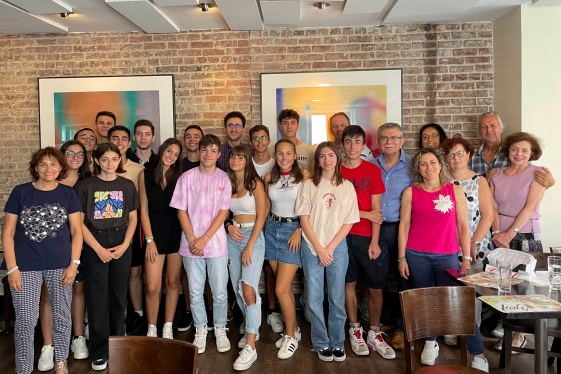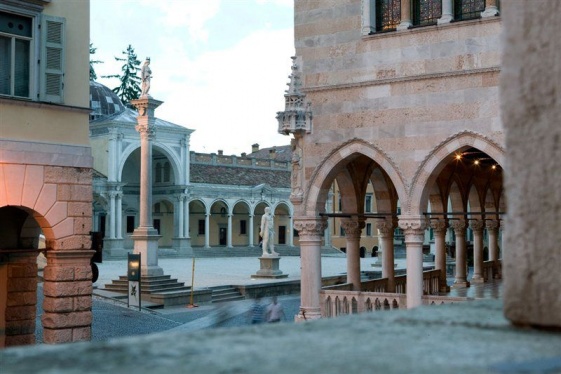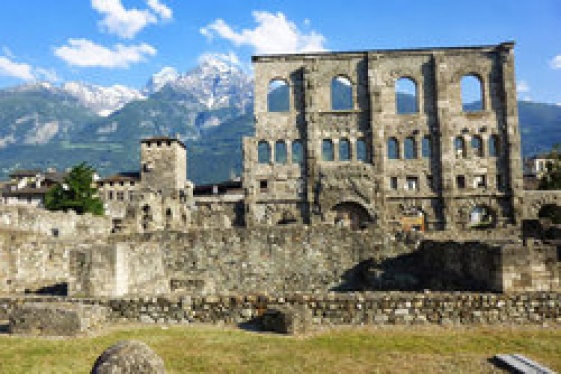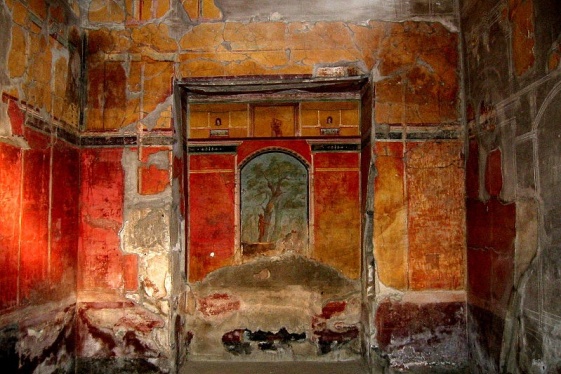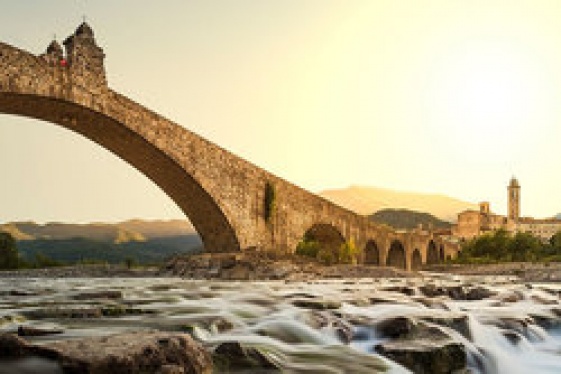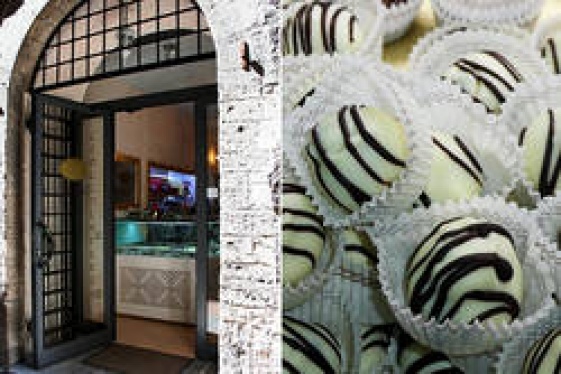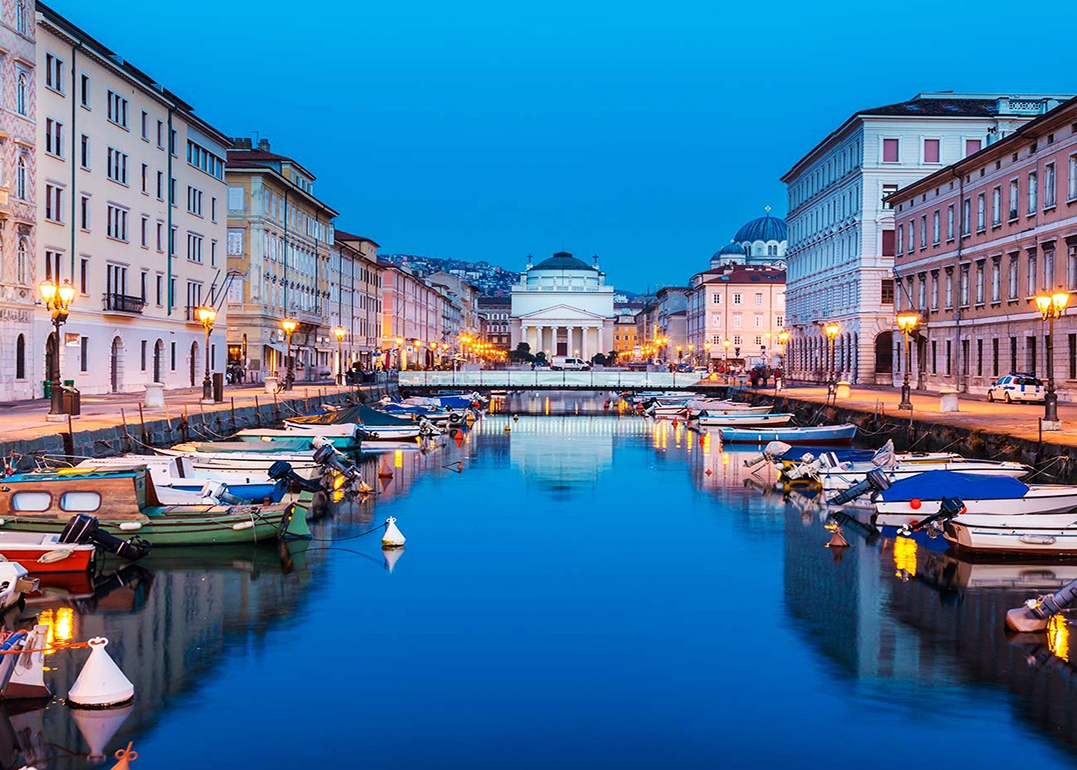

Its climate, with the dry Bora wind that blows over the karst plateau and towards the gulf; its history, shaped by Habsburg domination; and its geographic position, almost part of the Balkans; render the fascinating city of Trieste one of the most particular art cities in Italy, and of a notably mitteleurope character. Located in Italy’s extreme northeast (in Friuli Venezia Giulia), Trieste sat on what was a contested border for centuries; diverse populations intersected, and made their marks in the elegant and historic masterpieces, from the artistic to the architectonic, throughout the city.
A tour through Trieste cannot but begin in the magnificent Piazza dell’Unità d’Italia, with its palazzi in the Viennese Neoclassical style and its evocative panorama that overlooks the gulf on one side. It is one of the largest of the European piazzas that sit on the sea. The piazza hosts diverse buildings of interest, including the Palazzo del Governo, the former Palazzo of the Austrian Lieutenancy and now the city Prefecture Headquarters – its splendid balcony is covered in Murano glass and white stone mosaics. Also on the piazza is Palazzo Stratti and its historic Caffè degli Specchi, as well as the City Hall, fronted by the Fountain of the Four Continents and topped by a bell tower, and the whitest-of-white Palazzo del Lloyd Triestino, ex-Palazzo Pitteri and today seat for the Regional Government.
Afterwards, the 14th-Century Cathedral of San Giusto - a result of the union between the Romanesque Church of San Giusto and that of the Assunta - should be on your art city itinerary. The church’s mosaics, its splendid Gothic rose window and the adjacent bell tower dominate the city’s historic center. Not very far from the church is the fortress-museum of Castello di San Giusto. The oldest historical testaments from an era date back to the 1st to 2nd Centuries A.D., and derive from the Arco di Riccardo and from the Roman Theatre (which today is used for theatrical presentations in the summer).
On the Gretta Hill, then, rises the imposing Faro della Vittoria (Lighthouse of Victory), a monument in Istrian stone from Orsera and karst stone from Gabria, dedicated to the fallen of the First World War. Another must-see, without a doubt, is a visit to the white Castello di Miramare, a castle seemingly out of a fairytale; immersed in a green park, it boasts a vista of the sea that almost washes up right onto it. Among other highlights on a trip through this art city is the Canal Grande, a sort of extension of the small port that makes up part of the urban center that ends at the base of the Neoclassical-facaded Church of Sant’Antonio Nuovo; the Basilica of San Silvestro, one of the most ancient sites of worship in the city; the Synagogue and the beautiful Serbo-Orthodox Temple of the Holy Trinity and St. Spyridon. All are evidence to the cultural and religious melting-pot that is this city.
But Trieste is not only monuments, churches, museums and palazzi: its historic and celebrated caffes also deserve a visit, like those on Via di San Nicolò. They are true symbols of the Triestine passion for coffee, besides the passion for these locales themselves, which function not only as meeting points but also as incubators of illustrious literature. Important writers and poets of the caliber of Joyce, Italo Svevo, and Umberto Saba, as well as government functionaries and business magnates, often frequented these spots and gathered to read and debate each other.
You may be interested
-
"Storia e memorie" at Casa Italiana Sociocult...
The "Storia e memorie" group of 21 students and teachers from Friuli and Sardegna returned...
-
“Audace”, Prosecco Doc Trieste Serena Wines 1...
Refining Prosecco Doc Trieste in its Gulf, using the experience of a large group such as S...
-
“Studiare in Friuli”
The Convitto Nazionale "Paolo Diacono" WITH THE CONTRIBUTION OF Province of Gori...
-
10 most underrated Cities in Northern Italy
by Elisa della Barba Everyone's first visit, when in Italy, is dedicated to three...
-
10 UNESCO sites in Italy that maybe you don't...
Unknown among these known, the Excavations of Oplontis in Torre Annunziata (Naples), inclu...
-
11 Reasons You Should Be Drinking Prosecco
by Kerin O'Keefe Some say no other beverage defines the Italian philosophy o...
-
15 beautiful bridges you can cross in Italy
by Claudia Baroncelli Beyond monuments and churches, palaces and museums Italy al...
-
15 best chocolate shops in Italy
From the North to the South, Italy boasts an ancient tradition in making excellent artisan...



